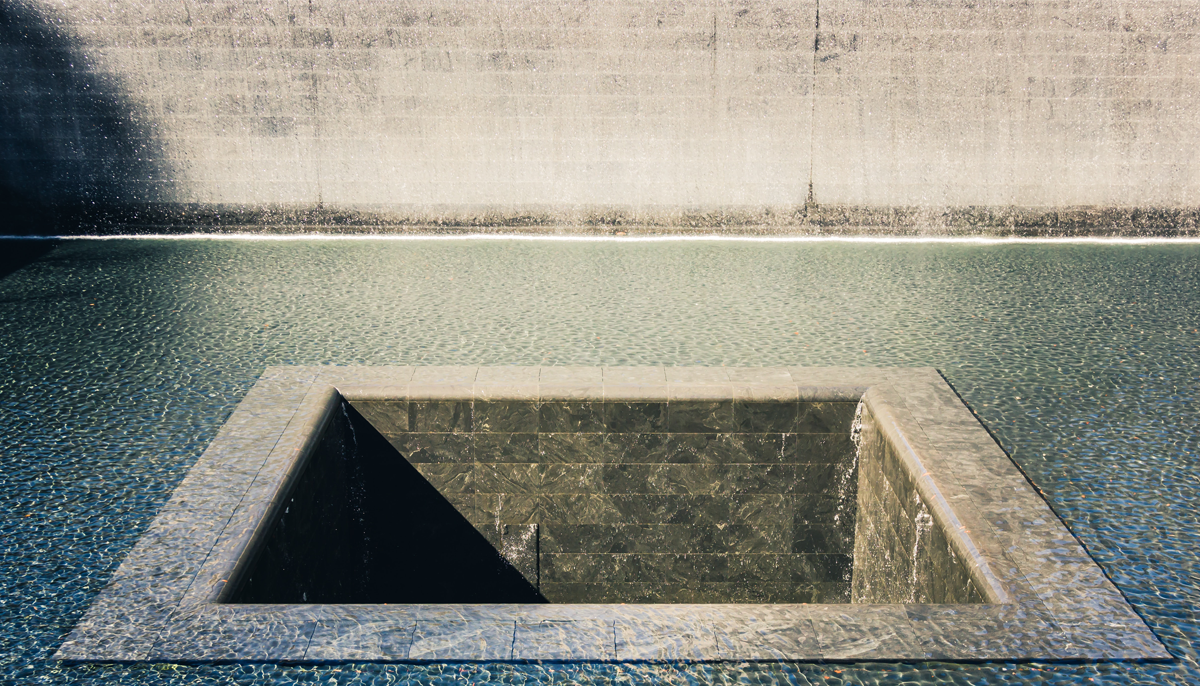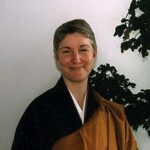During the weeks after September 11, 2001, I worked with families as they made memorial visits to Ground Zero. The trips began at the Family Assistance Center in Manhattan, where death certificates were issued and other support services arranged. The center was very big and very busy. From there we boarded a ferry to Ground Zero, the still-smoldering World Trade Center site. There were gunboats everywhere we looked in New York Harbor, and on the boat there was significant security. The wind blew brisk and the water incongruously glistened. On the way, the clergy and the mental health workers made what connections they could with the families, offering support or space as needed. When we arrived at the site, we walked up into the memorial area, and basically bore witness.
The metaphor of the site visit was so bare it stripped words down to the simplest speech, the most primary matter. From the world of business at the dock, where everyone was involved in taking care of the paperwork and assembling the resources to survive, we made a raw journey down the river to the charnel grounds. Arriving, all business stood still. Conversation withered.
Although we can do our best to secure an outcome, we can’t guarantee it.
It smelled very bad there. The buildings that remained standing seemed normal until you looked up and saw how parts near the top or on a side had been torn off. Their jagged edges seemed to be gesturing as if caught in mute pain, like a woman raped, walking away, trying to look ordinary but with her dress torn, bruises rising. The clergy’s work was to attend to the families, so I turned my attention from the site to them, and we spent fifteen or twenty minutes being there together, offering flowers at the temporary memorial alcove. When it was time for them to take the next step, the next breath, we took it together.
Placing a hand on the small of a crying woman’s back, it felt like her bones dissolved for a moment, then she leaned in, slowly her bones reformed. I remembered the words of twelfth-century Zen Master Hongzhi: Only silence is the supreme speech. Only illumination the universal response. When someone was ready for talk, talk came. Since there was so obviously nothing to do that was adequate to the pain, all that seemed possible was love. We just were that, loving those whose bodies were buried there, each other, the moments when eyes met and hands touched. Some constructed a palpable, fragile crust of solitude around themselves, and though we kept an eye out to make sure they were safe, there was a tacit agreement to let them be alone. (Actually, some of the clergy had to be reminded to let folks alone. At one morning meeting we were told, “Someone overheard a family member saying to another, ‘Whatever you do, don’t cry, or the clergy will come…’ So those who don’t know when to back off, learn!”) The flowers and teddy bears left by mourners were piled high and thick, kid-scrawled notes on some, photos and poems on others.
As we boarded the ferry to return to the family assistance center, there was a subtle shift in the energy, a change in how the grief was happening. During each return trip, the work of being clergy changed to protecting the spiritual process of each person on board.
Kirsten Bakis, in her brilliant novel Lives of the Monster Dogs, wrote, “In the space between desire and despair, between holding and letting go, between clinging and release, and between my desire for you and my desire for your happiness, which things cannot exist together, and yet which could not exist separately… Can you see this? In this space is the unspoken thing, the thing that lives.”
In the work on this boat, like the work with my Zen students, I found that there was a chance to enter that space. As each of us finds our way through practicing with grief and the other emotions that emerge, it can help to acknowledge and protect that space. I’m talking about the space that doesn’t know, doesn’t know why, doesn’t know what’s next. It doesn’t know bad or good. It is that space relieved of needing something other than what is: relieved of desire. It is the moment that is relieved of the sad predictions: relieved of despair. It just is, and in that is the only real refuge. Call it “the moment,” yet even that doesn’t clearly indicate its strength and spaciousness.
Unspoken, unnamable. Without securing ourselves in any way, we are intimate. Being at zero, if you will. Walking from zero.
More than ever, in the weeks after 9/11 I came to appreciate the practice of zazen, the authenticity of its refuge among so many basically false “answers” to the anxiety of being. We’ve had so much that is inauthentic sold to us, and we sell false hope to one another. We may take temporary refuge in probability: it is statistically unlikely that any individual one of us will be tremendously harmed or killed on a given day. We take temporary refuge in power: we have one of the best-funded, best-trained militaries in the world, and economic influence that is unparalleled in its capacity to put pressure where pressure is deemed needed. We take refuge in medicine: if we are exposed to a chemical or biological agent, it is likely that we will get treatment, and the survival rates are in our favor.
These false refuges fail to reach the bottom of our anxiety, because they don’t sufficiently deal with the issue. The issue, in one sense, is that although we can do our best to secure an outcome, we can’t guarantee it. We can’t know that we will live, or that those we love will live. We can’t know whether we will be well, or whether others will be well. We can medicate ourselves with probabilities, but we can’t cure the disease that way. We can’t know. The only real refuge, the only cure, is “the unspoken thing.” Being this moment. Just that. Zazen is the training to realize this, and Zen practice is the life it creates. It is the ability to take the step that is here. The bell rings, we bow and practice.
Why go consciously, literally, to where death is? Why end each night of practice with the Evening Gatha?
Let me respectfully remind you,
Life and death are of supreme importance.
Time swiftly passes by and opportunity is lost.
Each of us should strive to awaken…
…awaken.
Take heed. Do not squander your life.
The clear and raw symbolic movement, the intrinsic liturgy of zazen, should really be appreciated. The journey of it, to the ground of being, is the visit to Ground Zero every moment. The bell rings to signal walking meditation; the boat comes into the dock and we unload at the pier. How will we step forward from ourselves? This is the loneliest and most important work of any of our lives, in that no one can really tell us anything but that it is possible. To do it is to live it, and to live it may require feeling things that we’d like to avoid. We can’t predict; we can only practice.
From Empty Branches: A Season of Zen Teachings, by Bonnie Myotai Treace, Sensei. Published by Millstone Press.

